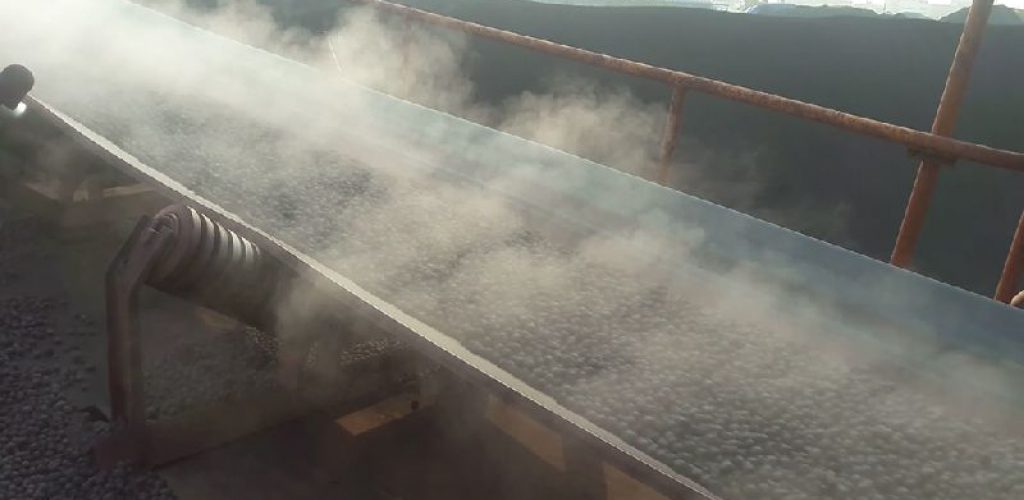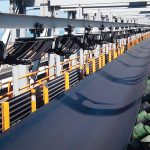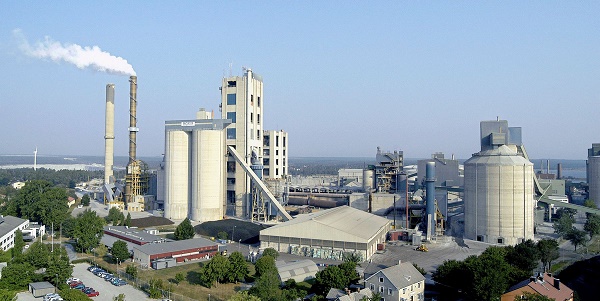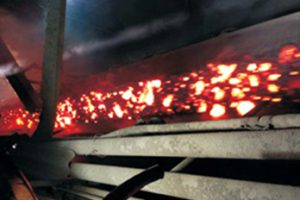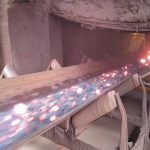Heat Resistant Conveyor Belt
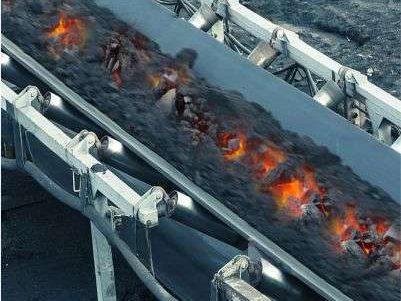
General Introduction:
General rubber conveyor belts can transport materials below 80°C, such as coal, ores, sand, gravel, and grains. However, certain specialized industries handle materials at extremely high temperatures, such as clinker, cement products, dry clay in cement plants, sintered ore, coke, pellets, slag in Steel mill, as well as materials in Foundries and Taconite industries. The temperatures in these industries often range from 200 to 500 degrees Celsius, and sometimes even exceed 800 degrees Celsius.
Temperature range and belt surface temperature of high-temperature materials (for reference only)
Materials Carried | Lump Size | Temperature of Materials Carried | Belt Surface Temperature |
Sintered Ore | 25~200mm (1~8 inch) | 200~400°C (390~750°F) | 130~150°C (270~300°F) |
Return of Sintered Ore | 10mm(0.4 inch) downward | 260°C (480°F) | 150~190°C (300~370°F) |
Coke | 100~200mm (4~8 inch) | 70~100°C (160~210°F) | 50~60°C (120~140°F) |
Raw Materia | 30 mm(1.2 inches) downward | 180~220°C (360~410°F) | 100~120°C (210~250°F) |
Clinker | 10~30 mm (0.4~1.2 inch) | 100~220°C (210~410°F) | 100~110°C (210~230°F) |
Cement | Powder | 100~125°C (210~250°F) | 80~90°C (170~190°F) |
Metal Powder | —— | 170°C (340°F) | 120~130°C (250~270°F) |
Molding Sand | —— | 200~250°C (390~480°F) | 80~90°C (170~190°F) |
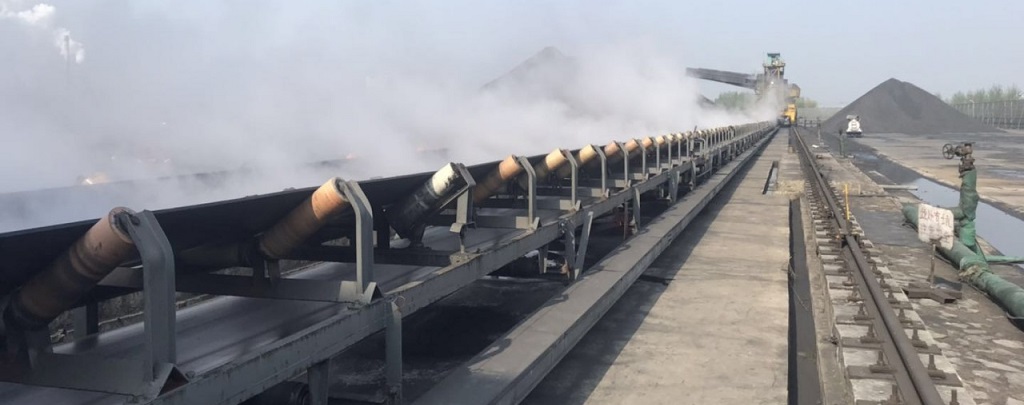
But natural rubber cannot withstand such high temperatures, and the severe wear, shock, and tension further accelerate the aging process of conveyor belts, causing rubber hardening and cracking. Therefore, when manufacturing conveyor belts for handling high-temperature materials, it is necessary to incorporate appropriate chemical formulations to create heat-resistant conveyor belts. In the chemical industry, DIN 22102 classifies heat-resistant conveyor belts into three grades: T1, T2, and T3, corresponding to test temperatures of 120, 150, and 180 degrees Celsius, respectively.
The heat resistant conveyor belt is made up of high temperature burning layer, transition layer, the organic insulation layer, a strong heat-resistant layer. The rubber surface uses EPDM(Ethylene Propylene Diene Monomer) or SBR (Polymerized Styrene-Butadiene Rubber) to make rubber cover respectively; the polyester canvas or canvas with high strength and high permeability can make the strong layer. These will be bonded together through high-temperature vulcanization.
The chemical principles of heat resistant rubber:
The heat resistant cover produces porous carbonized stratum as a conveyor belt carrying high-temperature material, this carbonized stratum has burning resistant function, and prevent the high temperature from transferring further into the belt center body, so that can protect the internal strength of the heat resistant conveyor belt. Furthermore, the carbonized stratum generates irregular tiny crack during the conveyor belt’s running, which can have a cooling effect for the conveyor belt itself.
Application:
Used in cement plant, steel and iron factory, metallurgy, coking industry. Mainly for conveying coke iron and steel castings cement clinker and high-temperature materials feature: Product selects cotton canvas or EP canvas as skeleton material. Cover rubber and cushion rubber is styrene-butadiene rubber or chlorobutadiene that has good heat-resistant work, and it is suitable for carrying materials under the temperature of 150℃.
The guide for choosing heat resistant conveyor belt cover type:
| Temperature | Type | Cover Ruber | Peak Material Temp. | Cont. Material Temp. | Application |
| Low Temperature | T1 | SBR | 150°C | 100°C | Low temperature with abrasive material (coke,sintered products,etc.) |
| High Temperature | T2 | EPDM | 200°C | 150°C | High-temperature application. (dried clay,cement,clinker,etc.) |
| Super Temperature | T3 | EPDM | 250°C | 180°C | Super high-temperature applications (sintered ore,cement clinker,chemicals,etc.) |
Sungda Conveyor Belt Co.,Ltd.

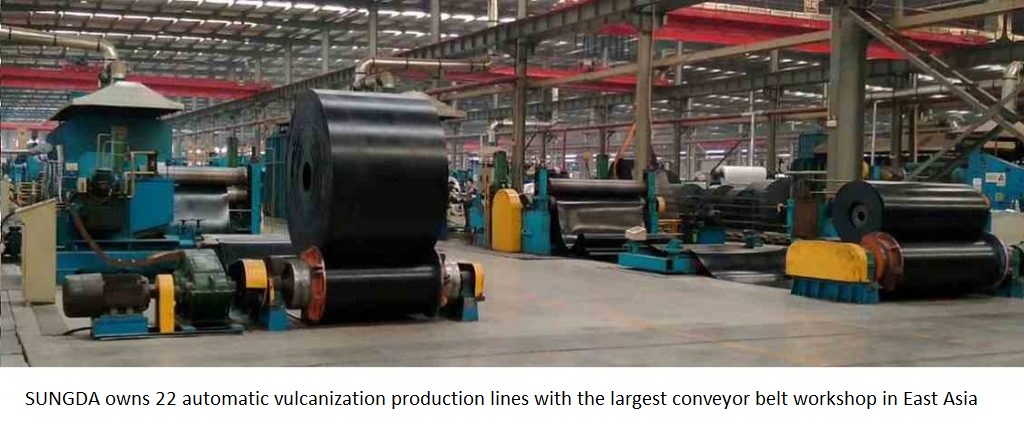
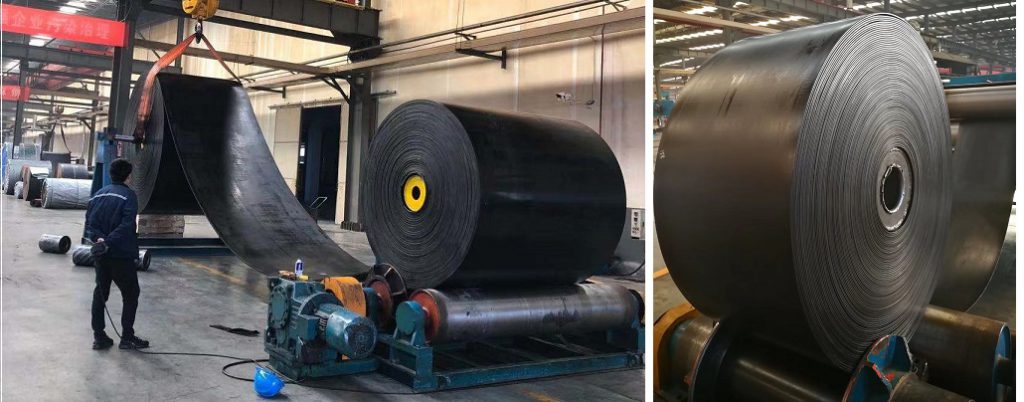
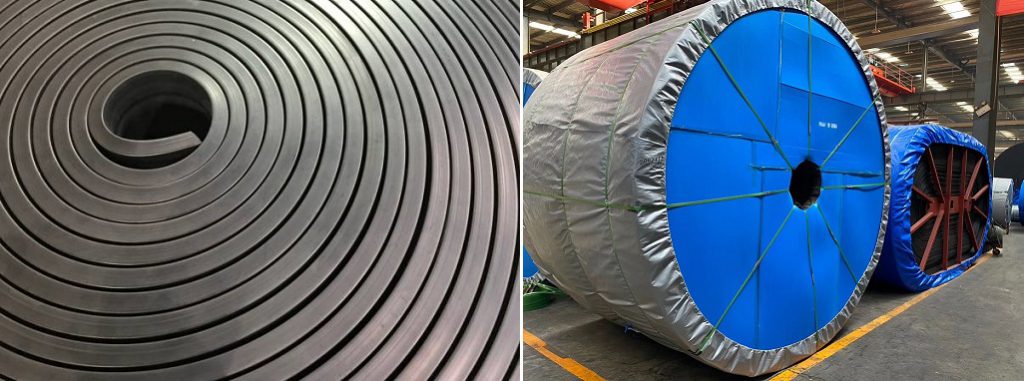

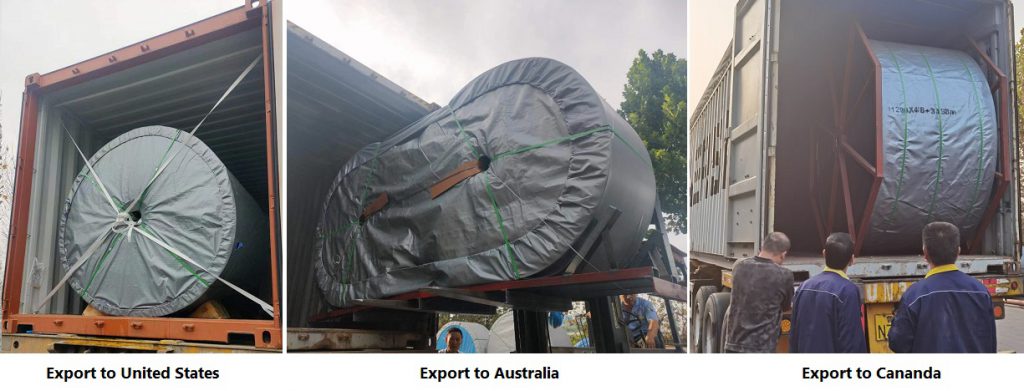
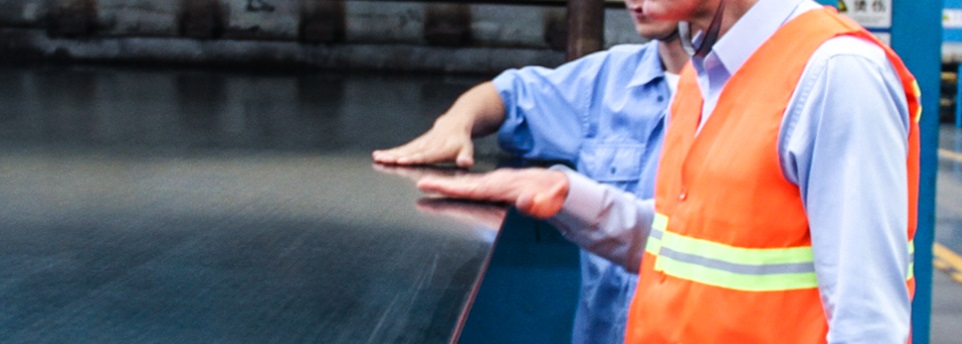
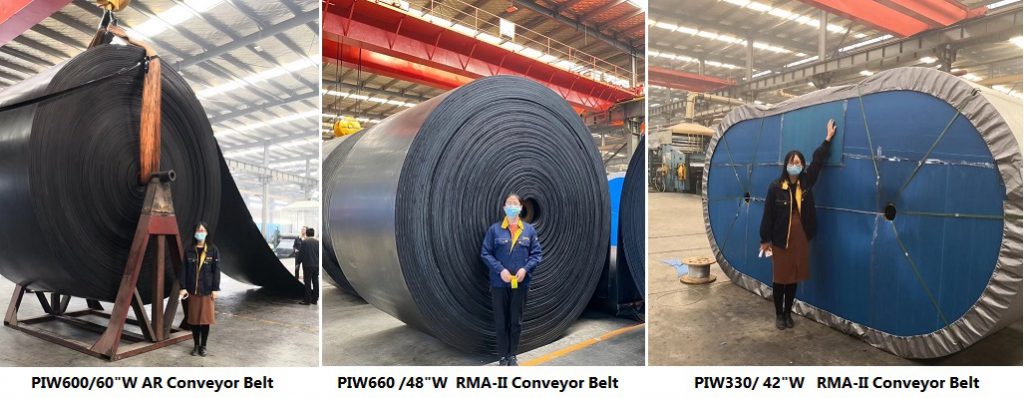
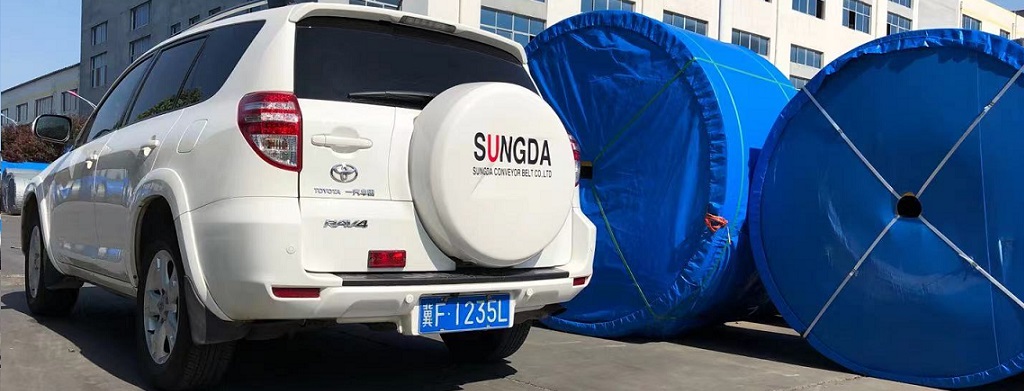
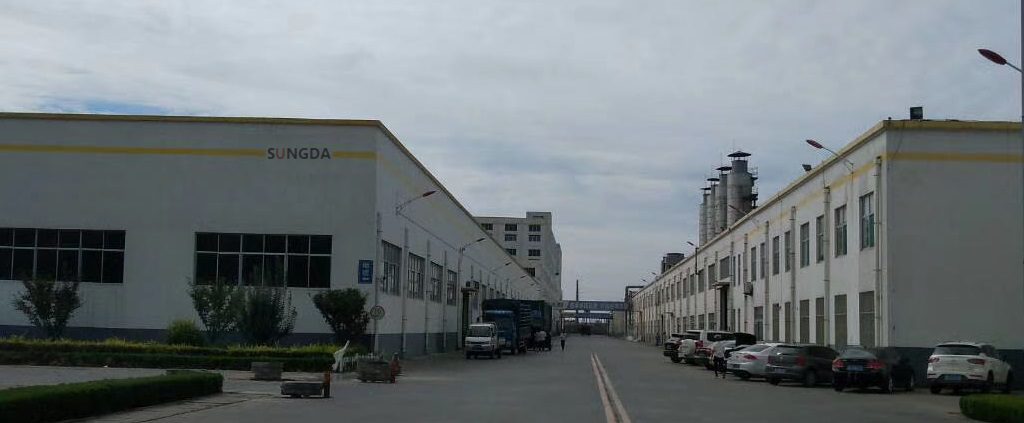
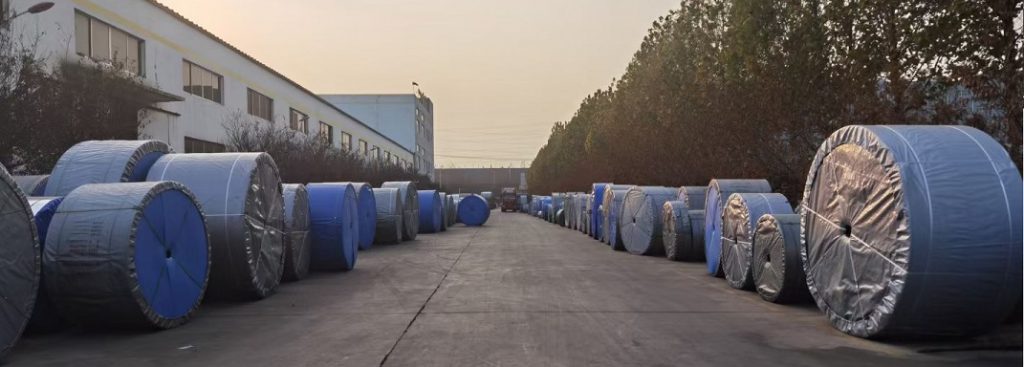

Tags: Abrasion resistance of heat resistance conveyor belts,anti-static properties of heat resistance conveyor belt,Application of heat resistance conveyor belts in cement production,Application of heat resistance conveyor belts in cooling and high-temperature processes,Application of heat resistance conveyor belts in the coal industry,Application of heat resistance conveyor belts in the metallurgical industry,Application of heat resistance conveyor belts in the power industry,Applications and industries of heat resistance conveyor belts,Buying guide for heat resistance conveyor belts,cement plant,cement plant conveyor belt,Chemical stability of heat resistance conveyor belts,clinker,coke,Comparison of heat resistance conveyor belts with other types,Design and manufacturing standards for heat resistance conveyor belts,dry clay,Fire resistance of heat resistance conveyor belts,foundries,guide,Heat resistant conveyor belt,High-temperature resistance of heat resistance conveyor belts,Installation and commissioning tips for heat resistance conveyor belts,International standards and certifications for heat resistance conveyor belts,Maintenance and care for heat resistance conveyor belts,Materials and construction of heat resistance conveyor belts,Operating temperature range of heat resistance conveyor belts,pellets,Pricing and cost of heat resistance conveyor belts,sintered ore,slag,specification,steel factory belt,steel mill,steel plant belt,Suitable environments and conditions for heat resistance conveyor belts,taconite,Tensile strength of heat resistance conveyor belts,Weather resistance of heat resistance conveyor belts


